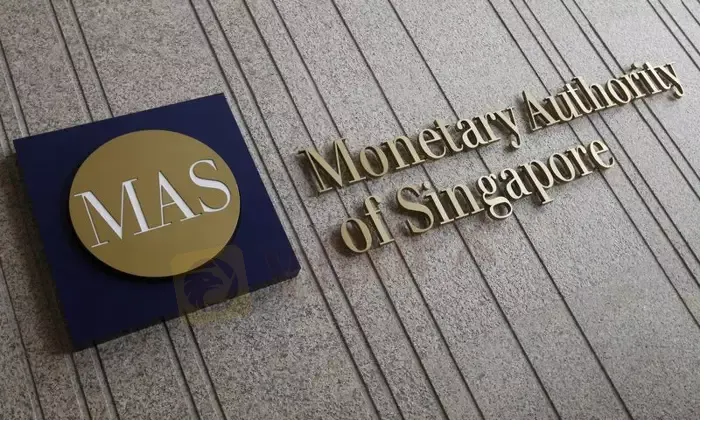简体中文
繁體中文
English
Pусский
日本語
ภาษาไทย
Tiếng Việt
Bahasa Indonesia
Español
हिन्दी
Filippiiniläinen
Français
Deutsch
Português
Türkçe
한국어
العربية
Singapore steps up inflation fight with surprise central bank tightening
Abstract:Singapore’s central bank tightened its monetary policy on Thursday, in an off cycle move, saying the action will slow the inflation momentum as the city state ramps up its battle against soaring consumer prices.

The Singapore currency jumped broadly after the news and was last up almost 0.7% to S$1.3963 per dollar, with economists expecting further tightening in October.
The tightening was the Monetary Authority of Singapore‘s fourth in the past nine months and comes hot on the heels of Canada’s surprise 100 basis point interest rate hike on Wednesday and just before an out-of-cycle 75 basis point hike in the Philippines on Thursday.
“Clearly, MAS is very concerned about inflation. It is just going to try to do all they can to put the brakes on inflation,” said Chua Hak Bin, an economist at Maybank.
The U.S. Federal Reserve is also seen stepping up its monetary tightening campaign with a supersized 100 basis point rate hike this month after a grim inflation report showed inflation racing at four-decade highs.
New Zealand and South Korea both delivered half percentage point rate hikes on Wednesday.
The MAS said it would re-centre the mid-point of the exchange rate policy band known as the Nominal Effective Exchange Rate. There will be no change to the slope and width of the band, it said.
“This policy move, building on previous tightening moves, should help slow the momentum of inflation and ensure medium-term price stability,” the MAS said in a statement.
The central bank also said Singapores gross domestic product growth is expected to come in at the lower half of the 3-5% forecast range for 2022, while core inflation is now projected between 3.0–4.0% for the year, up from an earlier forecast of 2.5–3.5%.
Preliminary data on Thursday showed Singapores GDP grew 4.8% in the second quarter, missing forecasts.
Singapore‘s core inflation rate — the central bank’s favoured price measure – rose in May at its fastest pace in more than a decade, to 3.6%, just above forecasts, driven by higher inflation for food and utilities.
The city-state has eased most of its COVID-19 local and travel restrictions since early April this year, supporting the economic recovery of the Asian financial and business hub.
More tightening ahead?
In April, Singapores central bank tightened its monetary policy to slow inflation momentum against soaring prices made worse by the Ukraine war and global supply snags.
The central bank holds two scheduled monetary policy meetings a year, in April and October.
The latest move is the second out-of-cycle change this year, after an unscheduled tightening in January and leaves the door open to further rate increases, economists say.
“Its telling you that we are worried about inflation and therefore we welcome a strong currency,” said Moh Siong Sim, a strategist at Bank of Singapore.
“It probably wasnt fully expected in terms of the timing and extent of the move. It leaves open the question of how much tightening is left to come?”
The MAS manages monetary policy through exchange rate settings, rather than interest rates, as trade flows dwarf its economy.
It adjusts its policy via three levers: the slope, mid-point and width of the policy band, which let the Singapore dollar rise or fall against the currencies of its main trading partners within an undisclosed band.
“With forecasts pointing to even higher inflation prints down the road, we consider it likely that we will see further action by the MAS at the October meeting,” ING economists said in a report.

Disclaimer:
The views in this article only represent the author's personal views, and do not constitute investment advice on this platform. This platform does not guarantee the accuracy, completeness and timeliness of the information in the article, and will not be liable for any loss caused by the use of or reliance on the information in the article.
Read more

Top Forex Brokers for Low-Cost Trading in 2025
Find the best Forex brokers for 2025 with low spreads, zero commissions, and no hidden fees. Simplify your trading journey with insights and the WikiFX app!

Participate Now in ForexCup Trading Championship
FXOpen announced the trading competition called ForexCup Trading Championship 2025 for traders. You can join, trade, and compete for exciting prizes. Here are the details

What the Movie Margin Call Taught Traders About Risk and Timing
The 2011 film Margin Call offers a gripping portrayal of the early hours of the 2008 financial crisis, set within a Wall Street investment firm. While the film is a fictionalised account, its lessons resonate strongly with traders and finance professionals. For one trader, watching the film had a lasting impact, shaping how they approached risk, decision-making, and the harsh realities of the financial world.

Why More Traders Are Turning to Proprietary Firms for Success
Over the past decade, one particular avenue has gained significant popularity: proprietary trading, or prop trading. As more traders seek to maximize their earning potential while managing risk, many are turning to proprietary firms for the resources, capital, and opportunities they offer. In this article, we’ll explore why an increasing number of traders are choosing proprietary trading firms as their preferred platform for success.
WikiFX Broker
Latest News
Fake ‘cyber fraud online complaint’ website Exposed!
Day Trading Guide: Key Considerations
NAGA Launches CryptoX: Zero Fees, 24/7 Crypto Trading
Scam Alert: 7 Brokers You Need to Avoid
AvaTrade Launches Advanced Automated Trading Tools AvaSocial and DupliTrade
What Determines Currency Prices?
Why More Traders Are Turning to Proprietary Firms for Success
MC Markets Review 2025
How to Use an Economic Calendar in Forex Trading
T4Trade Enhances Forex Trading with Advanced Tools for 2025
Currency Calculator


